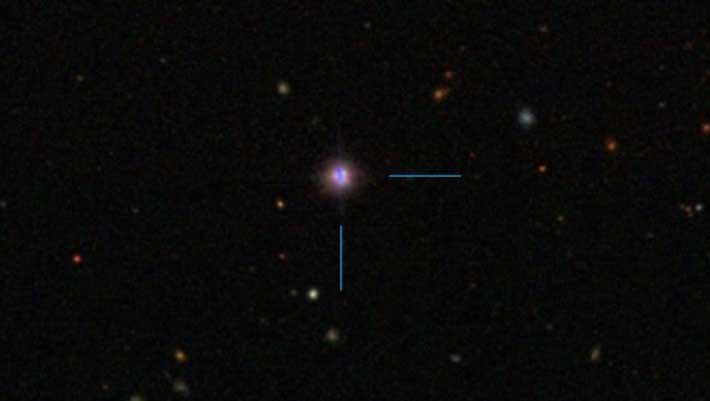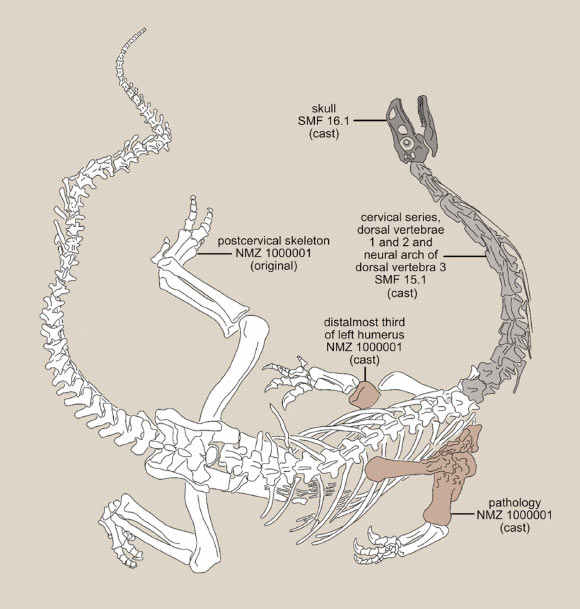In a new paper published in the Monthly Notices of the Royal Astronomical Society, astronomers from the University of Leicester describe for the first time how the black hole’s ‘over-eating’ of new matter led to the excess being ejected at nearly a third of the speed of light.
This image shows the Seyfert galaxy PG1211+143. Image credit: Centre de Données astronomiques de Strasbourg / SIMBAD / SDSS.
Powerful outflows of ionized gas have been a major interest of ESA’s XMM-Newton X-ray Observatory since first detected by University of Leicester astronomers in 2001, and subsequently recognized as a characteristic feature of luminous active galactic nuclei (AGNs).
“A black hole is formed when a quantity of matter is confined in a sufficiently small region that its gravitational pull is so strong that nothing can escape,” said University of Leicester’s Professor Ken Pounds and Dr. Kim Page.
“The size of a black hole scales with its mass, being 3 km in radius for a solar mass hole.”
“Stellar-mass black holes are common throughout the Galaxy, often resulting from the violent collapse of a massive star, while supermassive black holes may lurk in the nucleus of all but the smallest external galaxies.”
In 2014, the astronomers conducted a 5-week study of a supermassive black hole in the distant Seyfert galaxy PG1211+143, which is located about 1.2 billion light-years away in the constellation of Coma Berenices.
Using ESA’s XMM-Newton Observatory, they found a counter-intuitive inflow that added at least 10 Earth masses to the black hole’s vicinity, with a ring of matter accumulating around the black hole being subsequently identified by its gravitational redshift.
In the new study, they detected a powerful new outflow at 0.27 times the speed of light, launched a few days later, as gravitational energy released as the ring is drawn towards the hole heats the matter to several million degrees, with radiation pressure driving off any excess.
“Establishing the direct causal link between massive, transient inflow and the resulting outflow offers the fascinating prospect of watching a supermassive black hole grow by regular monitoring of the hot, relativistic winds associated with the accretion of new matter,” Professor Pounds said.
“PG1211+143 was a target of University of Leicester X-ray astronomers, using the ESA’s XMM-Newton Observatory, from its launch in December 1999.”
“An early surprise was detecting a fast-moving, counter-intuitive outflow, with a velocity 15% of light (0.15c), and the power to disrupt star formation (and hence growth) in the host galaxy.”
“Later observations found such winds to be a common property of luminous AGN.”
_____
Ken Pounds & Kim Page. 2025. Observing the launch of an Eddington wind in the luminous Seyfert galaxy PG1211+143. MNRAS 540 (3): 2530-2534; doi: 10.1093/mnras/staf637

























